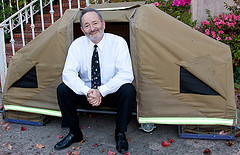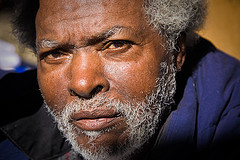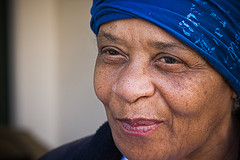Peter Samuelson likes to tinker with the things that scare or bother him. He's found that sometimes walking up to your fears and having a chat with them can change many things in the world, and not just yourself.

Samuelson is a film producer and philanthropist who founded three major children's philanthropies: the Starlight Children's Foundation in 1982 to assist seriously ill children, the Starbright Foundation in 1990 to continue that work, and First Star in 1999 to benefit abused and neglected children. He credits his parents for instilling in him a sense of doing social good. But the entrepreneurial drive comes from being a film producer.
"You get very good as a film producer at fixing things...what a film producer does, is that every six or nine or twelve months, you are in some place you've never been to before, with a group of people you mostly don't know, with a brand new script and you're working out, What does this mean? How do we do this? How can we afford this? What is the solution to this? You get undaunted."
He's made films as varied as Revenge of the Nerds, The Libertine with Johnny Depp and John Malkovich, and Tom & Viv with Willem Dafoe and Miranda Richardson. But it was his sense of observation that led to the birth of something called the EDAR. It came about because he rides his bike on weekend mornings and started to notice that there were more homeless persons than before. "One of the things that has worked really well for me, that has its amusing side, is that if I'm a little bit scared of something I make myself do it." He decided he would do interviews with the homeless people he encountered on his bike rides.
Samuelson interviewed 62 homeless persons and asked them two broad groups of questions: "How do you get money, and where do you sleep?" He learned that money came from recycling and sometimes panhandling. He also learned that their sleeping conditions were pretty rough. One day he had an epiphany when, near where he lived, he met a woman who was sleeping in a refrigerator box. The brand of refrigerator was the same kind as the one in his kitchen. The meeting started the philanthropist in him working, as well as the designer and the mathematician.
"In the County of LA there are about 72,000 homeless people, and there are 12,400 beds in shelters. Building a shelter is at a marginal cost of about $50,000 per bed generated. So if you want a building with a hundred beds it's about a five million dollar building. So if you run the math, $50,000 times 60,000, that's three billion dollars, and I have no clue how you raise three billion dollars."
He realized that the solution had to be cheap, better than a tent, and have wheels. It should have pockets so you could put recycling in it, and at night it better have brakes so you could park it and turn it into a bed. He also realized that it had to have windows, "so that you can keep an eye on what's going on outside. That was as far as I got" on the EDAR concept.
Samuelson called a meeting with the dean of the Pasadena Art Center College of Design and asked him, "Have you ever had a competition for something non-profit?" They put together a contest, which Samuelson sponsored, to find the best design for a mobile shelter. Through the competition Peter met designers Eric Lindeman and Jason Zasa, who helped create what would become the EDAR. With wire design and fabrication provided by John Ondrasic and Mike Orozco of Precision Wire Inc., they went through about seven prototypes.
It costs a little under $500 to make an EDAR and they are given out free of charge. Each time Samuelson's group receives another $500 in donations, they put it toward making another EDAR. Says Samuelson, "It's the most blessedly simple thing that I've ever done philanthropically."
Currently, there are 200 EDARs deployed in Los Angeles, Denver, Colorado Springs, Phoenix and Camden. NJ. Julie Yurth Himot, the EDAR Program Coordinator, took me down to the Midnight Mission on Skid Row in Los Angeles to meet a few people who are living in EDARs now.

Pops got one of the first EDARs and his only suggestion is that it needed stronger zippers. Julie promised him one of the newer models on which that design modification has been made. When I asked, Pops told me that he came to Los Angeles twenty years ago from North Carolina. He was skilled at installing flooring, tile and carpet and wanted to retire in Southern California. But things didn't go as planned and he's been at the Midnight Mission for a few years now.

Brenda likes the shelter of the courtyard at the Midnight Mission, particularly when she has an EDAR to grant her privacy. She also likes that it has windows. "You can see the planes go by, you can see the thunder and the lightning. You can see anything, cloudy days, sunny days, you can see anything. This is scenery."
For more information about the EDAR, check out EDAR.org. The EDAR has also been written up in Architecture Week, the Los Angeles Times and the Sacramento Homeless blog.
